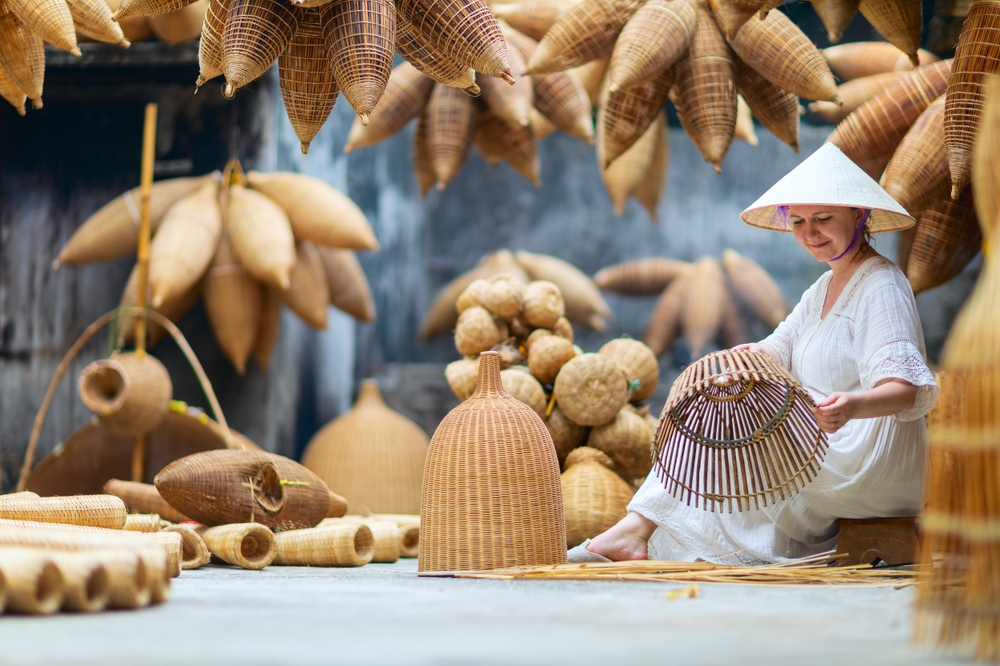Traditional crafts are undergoing a global revival, merging cultural heritage with economic sustainability. They play a crucial role in preserving cultural identities by transmitting ancestral knowledge and artistic traditions across generations. Additionally, these crafts bolster local economies by creating jobs and attracting cultural tourism. However, challenges such as modernization and market integration require balancing tradition with contemporary demands to ensure the longevity and relevance of these cherished practices.
Preservation of Cultural Identity
Traditional crafts serve as tangible expressions of cultural identity, embodying local traditions, values, and aesthetics that have been passed down through generations. They represent a profound connection to ancestral knowledge and heritage, fostering a sense of belonging and pride within communities. By preserving and practicing these crafts, artisans uphold their cultural roots and transmit cultural narratives to future generations, ensuring continuity and appreciation for their heritage. This connection to cultural identity through traditional crafts strengthens community bonds and reinforces the significance of cultural heritage in shaping collective identities.

Artisanal Skills and Knowledge Transfer
The revival of traditional crafts facilitates the transfer of artisanal skills and knowledge from experienced craftsmen to younger generations. Apprenticeships and workshops ensure the continuity of age-old techniques, preserving craftsmanship that may otherwise be lost in modern times.
Contribution to Cultural Diversity
Traditional crafts play a vital role in enriching cultural diversity by safeguarding intangible cultural heritage. They encompass unique language, rituals, and craftsmanship techniques specific to regions, fostering appreciation for diverse cultural expressions worldwide. Preserving these traditions promotes cultural understanding and strengthens social cohesion by honoring ancestral knowledge and local identities. Through artisanal craftsmanship, communities showcase their cultural heritage, contributing to a global tapestry of traditions that celebrate human creativity and cultural resilience.
Economic Opportunities for Artisans
Reviving traditional crafts opens economic avenues for artisans, particularly in rural and marginalized areas. Craftsmanship transforms into a viable livelihood, fostering sustainable development and empowering individuals to preserve their cultural heritage through economic engagement. By revitalizing traditional skills and promoting artisanal products, communities enhance local economies and create pathways for social and cultural sustainability. This economic revitalization not only provides financial stability but also strengthens cultural identity, ensuring the preservation and appreciation of traditional crafts for future generations.

Sustainability of Local Economies
Craft clusters and artisanal cooperatives stimulate local economies by generating income and employment opportunities. They attract cultural tourism, promote sustainable consumption practices, and contribute to the socio-economic fabric of communities, fostering resilience against economic fluctuations.
Revitalization of Rural Communities
Traditional crafts play a pivotal role in revitalizing rural communities by providing alternative sources of income. They mitigate urban migration, preserve traditional lifestyles, and enhance community cohesion through collective engagement in cultural practices and economic endeavors.
Environmental Benefits
Many traditional crafts prioritize sustainable materials and techniques, minimizing environmental impact compared to mass-produced goods. Natural fibers, locally sourced materials, and eco-friendly processes contribute to reducing carbon footprints and promoting environmental stewardship within artisanal communities.

Challenges in Modernization
Balancing tradition with modern market demands poses significant challenges for traditional crafts. Adapting age-old techniques to contemporary tastes and technologies necessitates innovation while safeguarding authenticity and cultural integrity. This delicate balance ensures relevance in a globalized marketplace where consumer preferences and production methods evolve rapidly. Artisans must navigate these challenges by embracing sustainable practices, leveraging digital platforms for outreach, and collaborating with designers to reinterpret traditional motifs. Ultimately, maintaining cultural authenticity while meeting modern market expectations is crucial for the continued vitality and longevity of traditional crafts.
Educational and Cultural Tourism Opportunities
Traditional crafts are increasingly attracting cultural tourism through immersive experiences and educational insights into local heritage. Artisanal workshops, heritage trails, and craft fairs provide visitors with hands-on opportunities to engage with traditional craftsmanship. These experiences not only promote cultural exchange but also foster appreciation for the skills and cultural significance embedded in these crafts. By showcasing the authenticity and uniqueness of local traditions, cultural tourism supports artisan communities economically while enriching visitors’ understanding of diverse cultural expressions and heritage preservation efforts.
Global Market Access and Fair Trade Practices
Access to global markets and adherence to fair trade practices empower artisans economically by ensuring fair wages, ethical production standards, and sustainable market integration. This approach provides equitable opportunities for artisans to showcase their traditional crafts on a global stage while preserving cultural heritage. By promoting transparency and ethical practices in production and trade, artisans gain recognition for the cultural and economic value of their craftsmanship. Fair trade principles uphold dignity and respect for artisans, fostering sustainable livelihoods and reinforcing the significance of traditional crafts in global markets.

Policy Support and Cultural Preservation
Government policies play a crucial role in safeguarding traditional crafts and promoting artisanal skills development. Investments in cultural preservation initiatives, heritage protection, and educational programs bolster public awareness and appreciation for traditional craftsmanship. By supporting artisan communities through funding, training programs, and infrastructure development, governments preserve cultural heritage while stimulating economic growth in cultural tourism and artisanal industries. These policies ensure the continuity of traditional crafts, fostering cultural resilience and promoting sustainable development grounded in local heritage and artistic traditions.
Conclusion
The revival of traditional crafts not only preserves cultural heritage but also fosters economic sustainability and community resilience. By supporting artisanal craftsmanship, we contribute to the richness of global cultural diversity and ensure a sustainable future for traditional practices worldwide.

